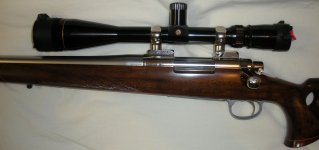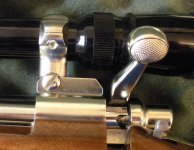antelopedundee
internet bum
I have a Rem 700 short action left hand. Prior to the last 2 months or so, it's been about 20 years since I fired the thing and I have no remembrance of any issues. So what would cause any issues with a difficult bolt lift even with an empty chamber? There is a bit of a hitch when you close the bolt, but you kind of have to whack it with the palm of your hand to get it open. The lugs should have been lapped way back when, but IIRC the action and bolt were nickel plated too. Also IIRC the spring was replaced with a 32# one.
I disassembled the bolt and everything inside looks good.
I disassembled the bolt and everything inside looks good.
Attachments
Last edited:






